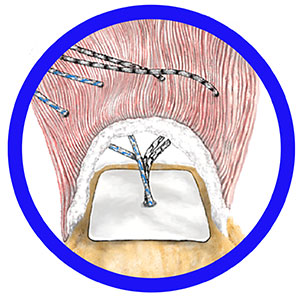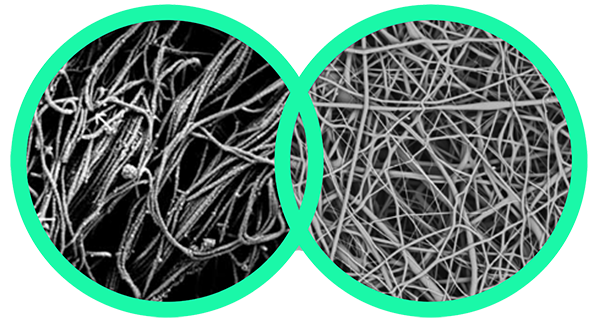 Intended to be used in conjunction with suture anchors for the reattachment of tendon to bone in rotator cuff repairs, Rotium™ is a non-woven, microfiber matrix comprising biodegradable polymer fibers that mimics the extracellular matrix structure supporting cellular infiltration and migration. Rotium™ facilitates functional tissue regeneration, promoting healthy tissue growth versus an inflammatory response to decrease scar tissue formation. It is designed to be fully absorbed and replaced by neo-native tissue within 3-4 months.
Intended to be used in conjunction with suture anchors for the reattachment of tendon to bone in rotator cuff repairs, Rotium™ is a non-woven, microfiber matrix comprising biodegradable polymer fibers that mimics the extracellular matrix structure supporting cellular infiltration and migration. Rotium™ facilitates functional tissue regeneration, promoting healthy tissue growth versus an inflammatory response to decrease scar tissue formation. It is designed to be fully absorbed and replaced by neo-native tissue within 3-4 months.
- In the last 30 years there have been tooling improvements, but no healing improvements [2]
- Some scaffolds have been used as “onlays” but tendon failure occurs at the insertion point and quality of repair is more important than augmenting the tendon [3]
 “Inlay” scaffolds are currently being investigated, but the four zones of the enthesis are too complex to reproduce in a scaffold [4]
“Inlay” scaffolds are currently being investigated, but the four zones of the enthesis are too complex to reproduce in a scaffold [4]- There is a need to keep the cells at the repair site to promote healing [5]
- Our scaffolds have shown the ability to promote cell migration [6], localize cells at the repair site [7], and facilitate remodeling into healthy tissue [8]


